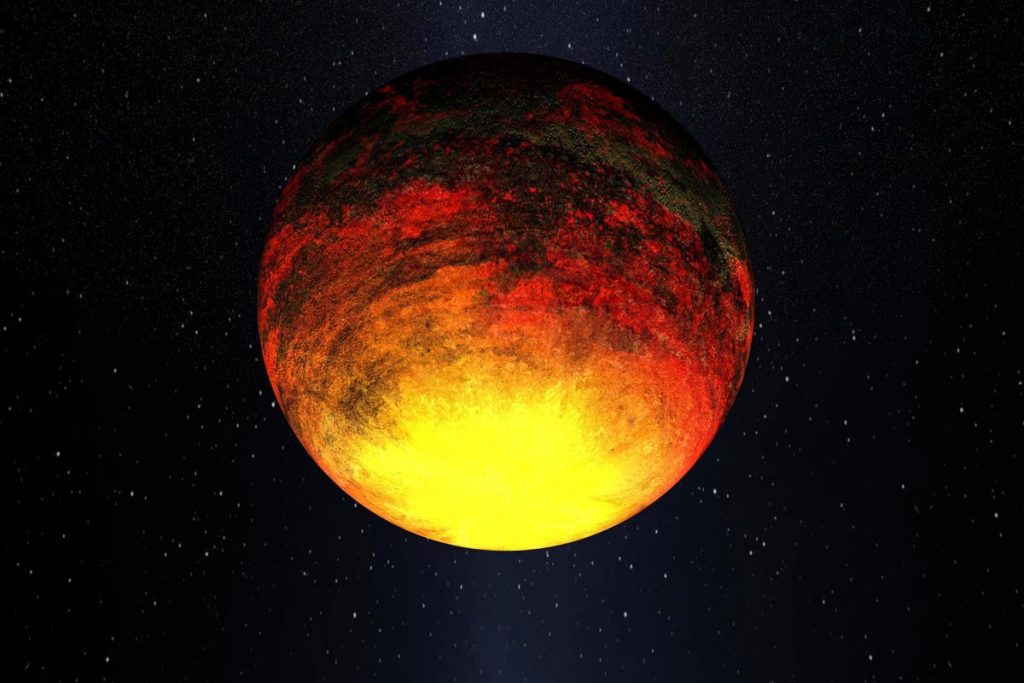The idea that hopped up space aliens are out cruising the cosmos spoiling for a fight remains key to most science fiction. But it’s far more likely that ‘first contact’ will be with an extrasolar amoeba than Darth Vader.
I argue that if simple life is abundant, it is also old, as it would have emerged more than 8 billion years ago in about one third of all candidate life-bearing planets today, Piero Madau, the sole author of a new paper appearing in The Astrophysical Journal, told me via email.
Eight billion years is almost twice the age of our own solar system.
In his new paper, Madau, a distinguished professor of astrophysics at the University of California, Santa Cruz, puts forth a practical roadmap to statistically frame how near we can expect to find microbial life on earthlike planets circling G and K spectral type stars.
Within 326 light years of the Sun, there may be as many as 10,000 rocky planets in the habitable zone —the region around a star where conditions are right for liquid water on a world’s surface (let’s call them “temperate terrestrial planets” or TTPs), Madau told me.
Early Star Formation Was Crucial
The formation of TTPs in the solar vicinity was likely episodic, starting with a burst of star formation about 10 to 11 billion years ago, says Madau. This was followed by another event that peaked about 5 billion years ago which produced the solar system, he says.
Astronomers have known of three incidents in which the Sagittarius dwarf spheroidal galaxy went straight into the Milky Way’s stellar disk, says Madau. It seems plausible that the formation of our own solar system was triggered by the first passing of Sagittarius, he says.
Most TTPs are older than the Solar System (older than 4.5 billion years), says Madau. We do not know what fraction of these TTPs was ‘habitable’ and ‘Earth-like’ so that simple, microbial life could eventually arise there, he says.
If microbial life did arise as soon as it did on Earth in greater than 1 percent of TTPs around K spectral type stars, then the closest ‘life-harboring Earth-like planet’ would be 65 light years away, Madau notes in his paper.
A key to it all is understanding the frequency of abiogenesis, the origin of life from non-living matter.
Let’s assume that abiogenesis is fast and simple life eventually arises in ‘all’ TTPs, says Madau. Then our population study predicts the closest, life-harboring Earth-like planet to be less than 16 light years away, he says. If future surveys were to find no biosignatures within this volume, however, one would need to reassess one of the two main hypotheses, says Madau.
Even so, there may be cause for some cautious optimism in the search for habitability markers and biosignatures by the next generation of large ground-based facilities and instrumentation, says Madau.
As For Finding Extraterrestrial Civilizations?
The late astronomer and SETI (Search for Extraterrestrial Intelligence) pioneer Frank Drake’s famous 1961 equation put probabilistic parameters on how many intelligent civilizations might be out there actively communicating over interstellar distances.
Today, we are now on the cusp of filling in many of Drake’s factors, except the equation’s ‘N’ factor, which would give us “the number of [extraterrestrial] civilizations with which humans could communicate.” Answers to this one are not likely to come within any of our lifetimes.
Time or age do not appear explicitly in Drake’s equation; so, clearly, the Drake equation is only part of the story, says Madau. He says a different mathematical approach may help answer questions like —- When did most of TTPs in the local neighborhood form? If microbial life is abundant, did it typically arise before or after the birth of life on Earth?
Life Could Still Prove To Be Very Rare
Biosignatures are going to be extremely challenging to detect, says Madau. Life may be so rare that there are no biosignatures within 3260 light years or more for us to detect, he says.
What can we guess about the presence of nearby extraterrestrial intelligent life?
Older ‘Earth analogs’ may be more likely to have developed sufficiently complex life capable of altering the environment and producing detectable oxygenic biosignatures, says Madau.
New near-term ground- and space-based telescopes will soon give us better stats to plug into Madau’s models. But we still owe much to Drake.
Frank Drake has given scientists a timeless framework to think about the number of habitable worlds, Cornell University astronomer Lisa Kaltenegger, director of Cornell’s Carl Sagan Institute to Search for Life in the Cosmos, told me via email. The most fascinating thing for me is that we are on the brink of finding that out, she says.
Read the full article here









